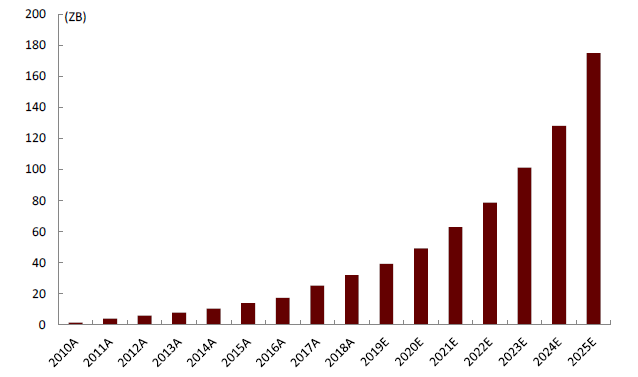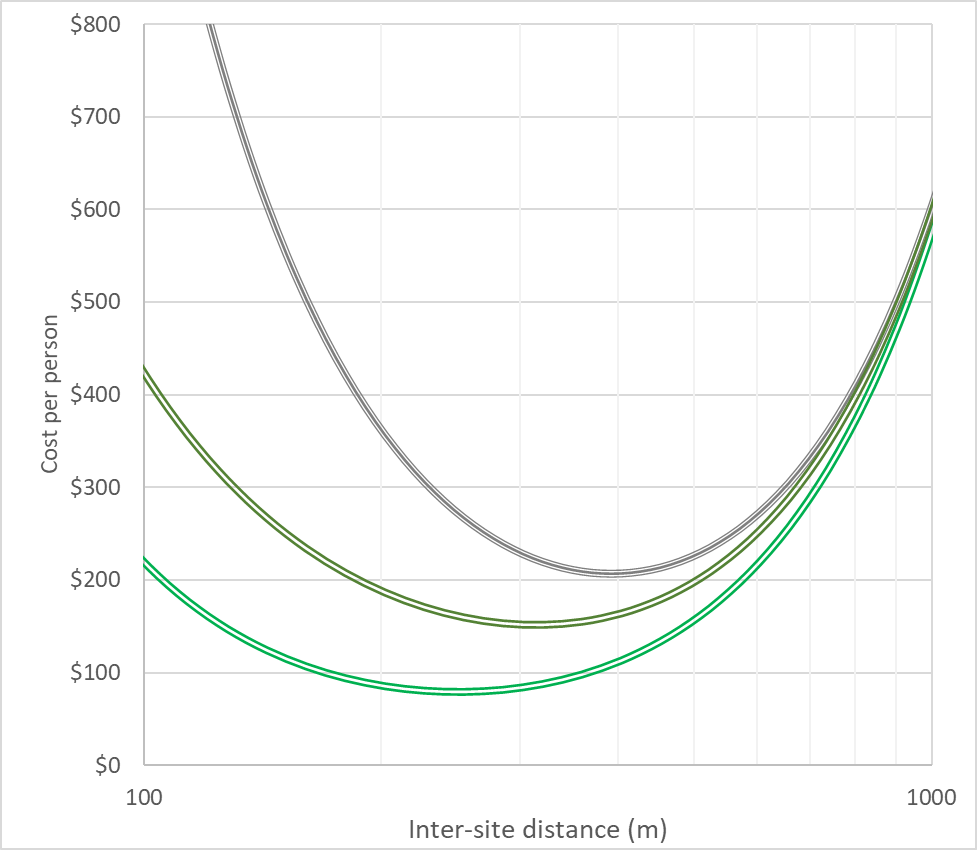The deployment of 5G wireless technology over the coming decade is expected to rely on the
deployment of many small cells. For example, the CTIA primer on small cells* estimates there
will be 800,000 small cells in the USA by 2026. Mobile operators will look to small cell
technology to add data capacity in areas of traffic congestion. This dense small cell network
both increases the radios per subscriber and provides subscribers improved signal quality for
more efficient data transfer. The shorter distance between radio sites also helps overcome the
short signal reach of higher frequency 5G radio spectrum. As a result, small cells are becoming
the leading solution in growing the data capacity of the network.
Small cells have become increasingly common over the last five years to improve both the
coverage and capacity of the network. The priority for operators in the initial deployment of
cellular networks was broad signal coverage, to provide a minimum level of mobile service to
the largest possible number of customers. Large, high-power macro-tower cellular radio sites
were built in regions with the largest number of potential customers. This led to the early
deployment in urban areas and lagging deployment in rural areas. The number of sites then grew
over time as coverage was extended. Today, the priority of investments in mobile networks is on
capacity increases driven by data services.
Mobile data demand and capacity have grown at an exponential rate for three decades. Figure 1
shows the global growth of mobile data according to IDC. Worldwide mobile data traffic has
grown at a remarkable CAGR of 50% since 2010. This demand for data has driven tremendous
capacity expansions in the network throughout the 4G era. The number of cellular radio sites has
grown, and additional wireless spectrum was deployed. Continued growth of ~30% per year is
expected as the industry moves toward 5G, the fifth generation of cellular network technology.
Growth of mobile data demand by 25-30% per year means that network operators need to
expand capacity by 10x in less than 10 years – a daunting task.

Figure 1: Global Data Consumption History & Forecast, IDC < Data Age 2020>
5G wireless technology provides a roadmap to higher data capacity, with enhanced Mobile
Broadband (eMBB) as one of the primary use cases of the 5G standard** . 5G technology
improves data capacity using new radio spectrum, increasing radio site density, and through
more efficient use of radio spectrum (spectral efficiency). Radio spectrum is a limited resource,
and licenses for prime spectrum resources come with a high cost. For example, in 2017, the US
FCC received auction proceeds of $19.8B for 70 MHz of spectrum in the 600MHz band and
$2.7B for licenses of mmWave spectrum at 24 & 28 GHz in 2019.*** Network operators take a
significant risk when they acquire spectrum in advance, and planners cannot completely count on
getting the spectrum they want when they want it.
Adding radio sites is more flexible. While also expensive and requiring approval by municipal
authorities, radio sites can be added when needed under the control of the network operator. Network operators are continuously adding capacity to meet increased demand, thereby avoiding
the risk of losing customers to competition. The stakes are high when making decisions to
license spectrum.
Thus, there are three cases to consider. The first is the coverage-limited case occurs when the
number of sites is set for coverage rather than capacity. The second is the spectrum-limited case
wherein spectrum is highly constrained, and the number of radios is increased to meet data
capacity. The third is the minimum-cost case where the spectrum and number of sites can be
matched to the lowest cost solution. The minimum cost case represents the optimum tradeoff for
the network operator between the spectrum purchased and the number of sites added.
The cost of deploying new sites is clearly a key issue for network operators. Small cell networks
reduce the site cost. The cost of fiber and power distribution is a primary cost driver in these
networks, and alternatives to traditional trenching provide further large savings in the network
cost. Figure 2 shows the impact of these lower costs for a 50 GB/mo network built with small
cells. The grey curve shows the costs of the 50 GB/mo network with $150k sites with $300/m
trenching cost. The dark green curve shows that small cells with a lower site cost (in this case
$30k/site) produce a lower overall cost with a shorter distance between sites. The bright green
curve shows that small cells with lower deployment costs can significantly reduce the overall
network cost. In addition, the distance between sites is significantly reduced which enables a
wider range of lower-cost spectrum to be used.

Figure 2: The lower cost of a small cell network in an urban location. The cost per person is
shown versus inter-site distance for three different cell deployment costs. The gray line
represents $150k sites with $300/m trenching cost. The green lines represent small cells at
$30k per site at $300/m (dark green) and $50/m (light green) trenching cost.
In summary, the continuing increase in data traffic drives the need for network capacity
expansion. Additional radio sites are inevitable, and small cells provide a cost-effective solution.
New spectrum bands are being added to increase data capacity, but the shorter range of these
higher frequency bands requires more dense radio sites. Finally, the economics of capacity
expansion achieve the lowest expansion cost with a balanced mix of increased spectrum and increased radio sites. These strong fundamental drivers explain why small cells will be a
significant part of 5G networks.
*What is a Small Cell?
**3GPP standard release 15: https://www.3gpp.org/release-15
***3 https://docs.fcc.gov/public/attachments/DA-19-484A1.pdf; https://docs.fcc.gov/public/attachments/DA-19-485A1.pdf; The average cost of a winning bid for 600MHz spectrum was about $1/MHz per person. The cost of mmWave spectrum was significantly lower.
